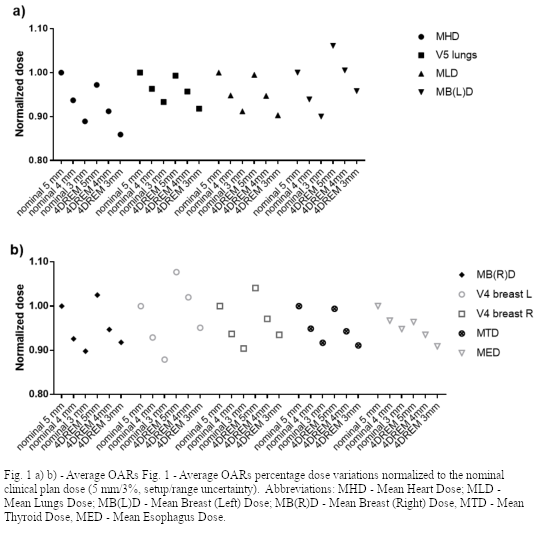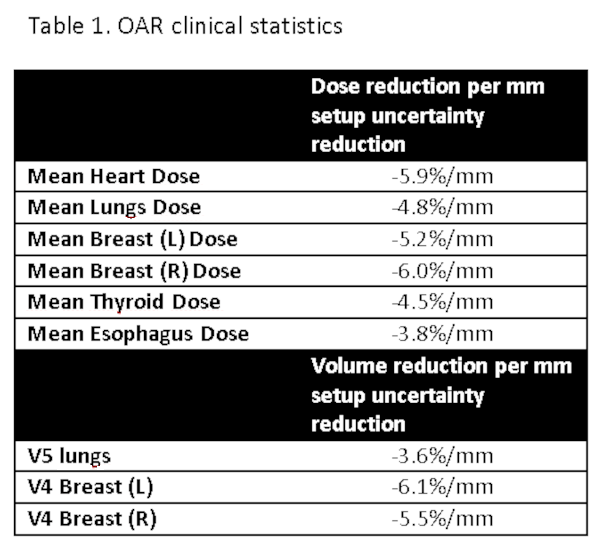Reduction of setup uncertainty in proton therapy for mediastinal lymphoma patients.
Pietro Pisciotta,
The Netherlands
PO-1498
Abstract
Reduction of setup uncertainty in proton therapy for mediastinal lymphoma patients.
Authors: Pietro Pisciotta1, Adriaan C. Hengeveld1, Sabine Visser1, Anne Niezink1, Anne Crijns1, Cássia O. Ribeiro1, Dirk Wagenaar1, Johannes A. Langendijk1, Gabriel Guterres Marmitt1, Stefan Both1
1University Medical Center Groningen, Department of Radiotherapy, Groningen, The Netherlands
Show Affiliations
Hide Affiliations
Purpose or Objective
Having larger robust optimization parameters than necessary could induce higher doses to the organs-at-risk (OARs) without a clear improvement in target coverage. The main aim of this study was to establish the optimal robust optimization uncertainty settings for mediastinal lymphoma patients undergoing intensity-modulated proton therapy (IMPT) in order to reduce OARs dose using machine and patient specific data.
Material and Methods
Ten mediastinal lymphoma patients treated with IMPT were retrospectively analyzed. A 4DCT was acquired for treatment planning and weekly repeated 4DCTs were used to evaluate possible deviations in target coverage along the treatment course. Clinical treatment plans were robustly optimized with settings of 5 mm/3% (setup/range uncertainty).
For each patient, two additional plans were created with reduced setup uncertainty (4 and 3 mm) using an in-house developed script. This script generates treatment plans with smaller setup uncertainty settings from the clinical plan maintaining target coverage by using a voxel-based dose mimicking optimization approach. All treatment plans (5, 4 and 3 mm setup uncertainty) were subjected to 3D robustness evaluations by simulating a set of 28 setup and range error scenarios resulting in dose-maps (dose per scenario and voxel-wise min/max dose) obtaining a total of 840 scenarios.
In addition, patient-specific dose accumulation, including information from the whole treatment course, was performed employing an in house developed 4D robustness evaluation method (4DREM), which simulates setup and range errors in combination with machine errors, anatomy changes (repeated 4DCTs), breathing motion and interplay effects. This allowed comprehensive dose evaluations for the plans designed with different setup uncertainties (5, 4, and 3 mm) resulting in a total of 420 scenarios.
Results
The target was adequately covered in all treatment plans and 4DREM scenarios. All dose distributions showed target coverage V95>99% and D98>97%. No clinically relevant differences were noted for the 3D robustness evaluations among all plans.
The OARs dose variations investigated in this study are shown in Figure 1. A remarkable dose reduction in OARs was observed in the nominal and 4DREM doses when the robustness setting was decreased. In Table 1, the percentage dose or volume variations per mm setup uncertainty reduction are listed. The average mean heart dose decreased by 5.9%/mm setup uncertainty reduction and, as a consequence, the lifetime risk of acute coronary events decreased on average by 0.2%/mm setup uncertainty reduction.


Conclusion
The results of this study indicate that a margin reduction to 3 mm setup is feasible, maintaining clinically acceptable target coverage and reducing the dose to OARs.